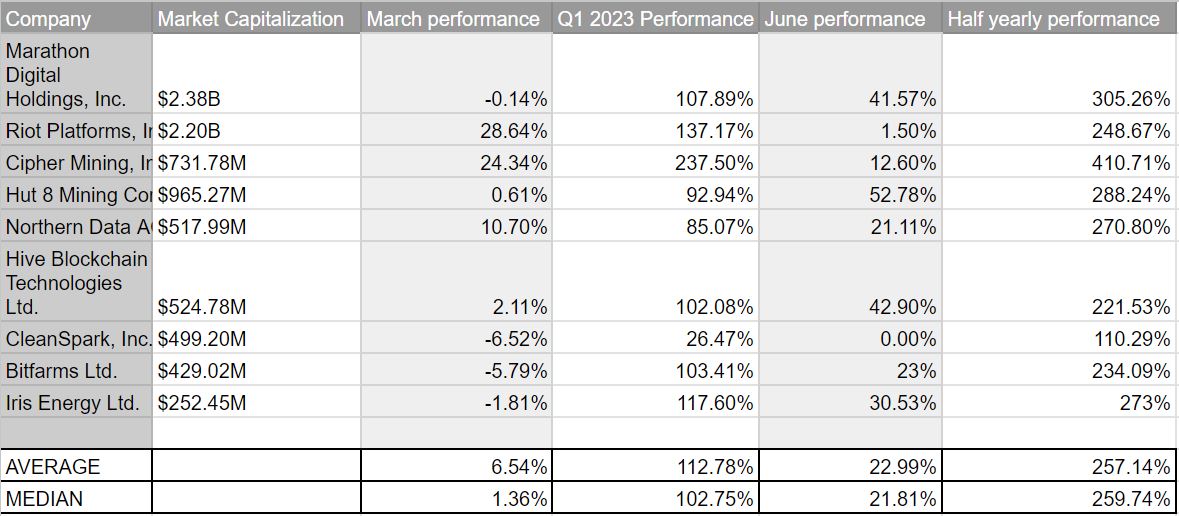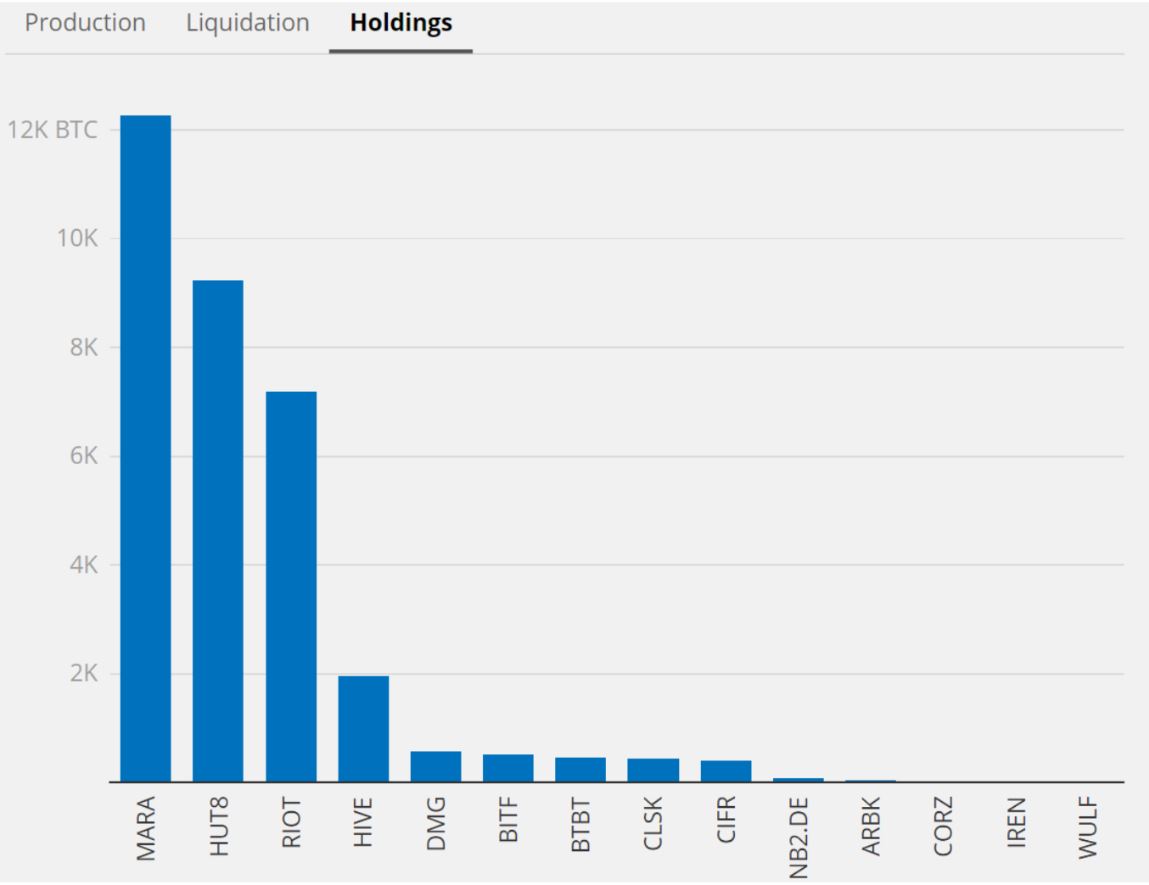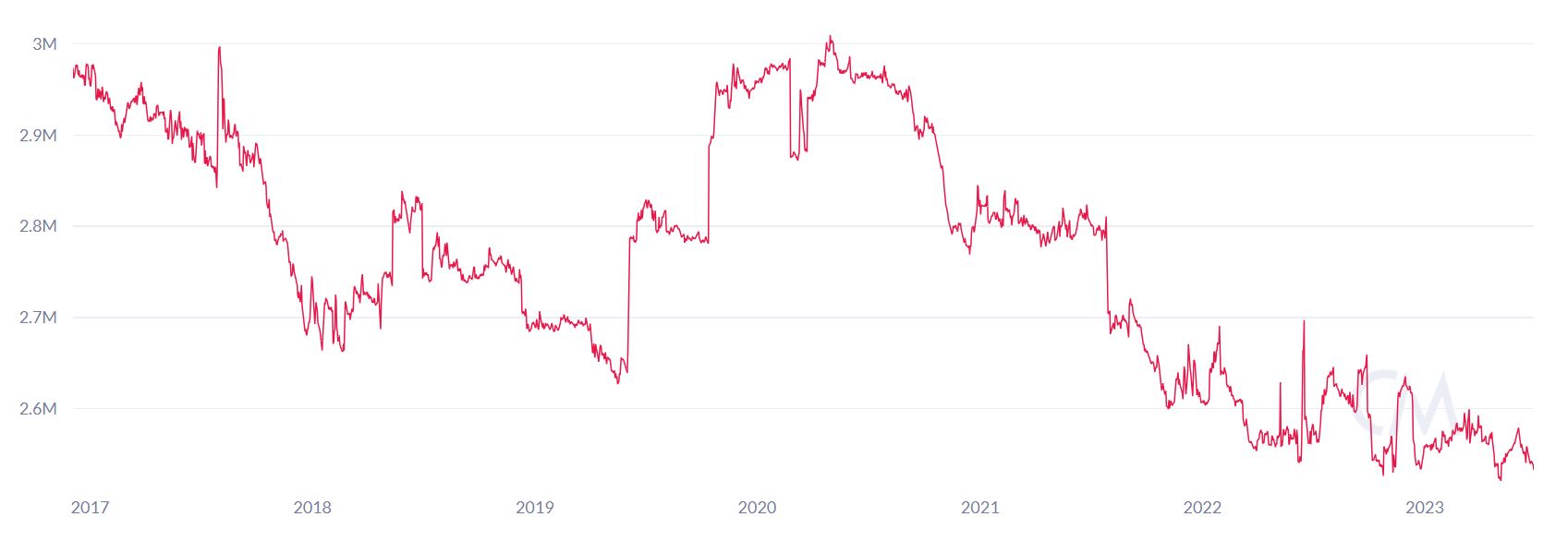Bitcoin mining stocks have been on a triple-digit tear in 2023, but an uptick in BTC sent to exchanges hints at waning momentum.

Market Analysis
Bitcoin mining companies outperformed Bitcoin by a huge margin amid the recent bullish price action in the top cryptocurrency.
The average year-to-date stock price gains in 2023 among the top nine public Bitcoin mining firms by market capitalization stood at 257.14%. The figure is almost three times higher than Bitcoin’s (BTC) gain in the same period.
The higher gains represent the leveraged beta effect that mining stocks enjoy. Leveraged beta suggests that during Bitcoin upside, these stocks outperform, whereas when Bitcoin slumps, they face deeper downside risk.
Due to its high leveraged beta, Bitcoin’s price performance will remain a crucial factor in determining the direction of mining stocks.
The trends within the mining sector show that miners are positioning themselves for the long term by buying more machines. However, they have yet to exhibit accumulation levels that match previous bull markets, suggesting that the uptrend in the stocks could stall in the medium term.

Multiple mining companies expanded in the past month, which added to the positive sentiments and long-term value of the stocks. At the same time, the mining conditions improved with a dip in hash rate and an increase in price.
However, on-chain data shows miners unloaded a significant portion of their holdings, which could be a sign of a downturn in the near future.
Mining companies make expansive moves
The public mining companies in the United States made aggressive moves in June, signaling long-term strength in the industry.
Hut 8 Mining (HUT8) merged with US Bitcoin Corp (USBTC), increasing its total hash rate to 9.8 EH/s, making it the third-largest public mining entity in the United States. However, it also borrowed $50 million from Coinbase for general corporate purposes.
Cleanspark (CLSK) invested $9.3 million to increase its hash rate by almost 1 EH/s.
At the same time, Riot Blockchain (RIOT) entered into a $170 million deal with mining hardware manufacturer MicroBT to nearly double its hash rate capacity by 2024 upon full deployment.

Mining stocks are prepped for a short squeeze
Marathon Digital Holdings (MARA) is one of the most shorted stocks on the Nasdaq, with 25.06% of its float shares shorted, per data from Fintel. For reference, values above 10% are considered heavily shorted.
Similarly, 14.54% of Riot’s float shares are shorted — an increase from 13.48% in May — and Cipher Mining (CIFR) is at 22.32%.
The rest have between 5% and 10% of their floating shares shorted, representing a relatively neutral market stance.
The increased short interest in MARA, RIOT and CIFR could be due to excessive debt and stock dilution, which negatively affects the profitability of existing shareholders.
Mining profits improve, but miners are selling
The one-hop supply metric from Coin Metrics, representing the holdings of wallets that received coins from mining pools, shows that these addresses have reduced their holdings to a near one-year low.

Glassnode data also recorded a significant volume of miner coins transferred to exchanges. The exchange inflows surpassed even the levels seen during the bull market of 2021.
#Bitcoin Miners are currently recording extremely high Exchange interaction, sending an ATH of $128M to Exchanges, equivalent to 315% of their daily revenue.
https://t.co/O78r5MY34f pic.twitter.com/MR5b9Au7AA
— glassnode (@glassnode) June 27, 2023
Moreover, the miner holdings are still near a two-year low, which is likely due to low profitability for the most part of 2023.
The network’s total hash rate reached a new all-time high at the start of June. However, it has been dropping amid heat waves in Texas. The dropping hash rate and increase in Bitcoin’s price above $30,000 is contributing to increasing the profitability of running miners.
The production cost of the most used mining model, the Antminer S19, ranges from $20,000 to $25,000, depending on electricity cost.
Notably, companies with mining farms in Texas such as Riot can incur some losses due to the climate. However, it is likely that the companies would have taken steps to hedge the heat wave risks, as it is not the first time they’ve experienced heat waves.
Related: Riot Blockchain’s Bitcoin mining productivity dropped 28% YOY amid record Texas heat
Nevertheless, despite the improvement in profitability, miners are unloading Bitcoin, potentially a sign of future negative price action.
While revenue improved in June, miners have continued to spend on expansion and operation costs, which suggests that a crypto bull market has yet to start.
The expansion plans of companies and the decline in on-chain miner holdings project medium-term sideways price action or a potential correction in mining stocks if the BTC price drops.
This article does not contain investment advice or recommendations. Every investment and trading move involves risk, and readers should conduct their own research when making a decision.
This article is for general information purposes and is not intended to be and should not be taken as legal or investment advice. The views, thoughts, and opinions expressed here are the author’s alone and do not necessarily reflect or represent the views and opinions of Cointelegraph.

